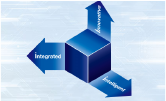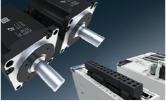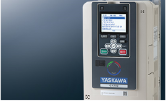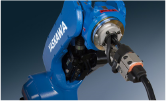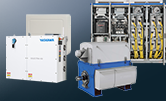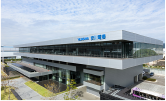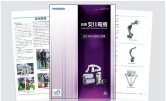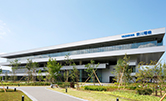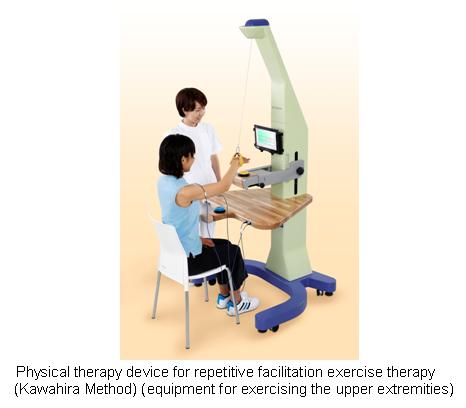・The equipment helps patients stretch their paralyzed upper extremities (shoulders, elbows) upwards and forwards, and then bend their arm directly in front of themselves.
・The patient’s wrists are suspended by a wire with the weight of the arm supported via the force of a motor, allowing even frail patients to move their arms.
・Buttons are positioned directly in front of the patient at chest height and a little higher and farther away. The patient bends and stretches his or her arms and presses the buttons one after the other. Typically the patient repeats this between 100 and 1,000 times each day.
・A synchronized vibrating stimulus as well as electrical stimulation is applied (referred to as facilitation) to the muscles used when bending and stretching as these are being exercised, facilitating the voluntary movement of the patient’s arms.
・These facilitation stimulations help to arouse the neuronal circuits that convey the movements of the shoulders and elbows (from the environs of intracranial damage to the spinal cord), allowing for the repetition of motion. This results in strengthening of efficient neural pathways, which is anticipated to lead to facilitation of recovery from paralysis.
Contact:
Corporate Communication Group
YASKAWA Electric Corporation
E-mail: web_mstr@yaskawa.co.jp
 Region
Region



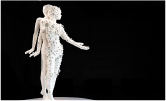 Principles & vision
Principles & vision
 Procurement
Procurement
 Sustainability for the Yaskawa Group
Sustainability for the Yaskawa Group
 Customer satisfaction
Customer satisfaction
 Supply chain
Supply chain
 Social contribution
Social contribution
 Compliance & risk management
Compliance & risk management



